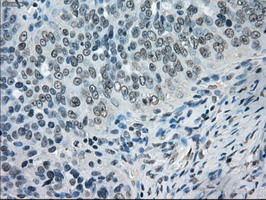
IHC of paraffin-embedded Adenocarcinoma of ovary tissue using anti-CRYAB mouse monoclonal antibody. (Dilution 1:50).
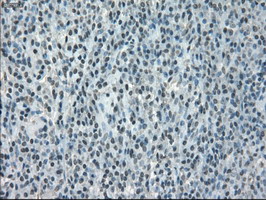
IHC of paraffin-embedded lymphoma tissue using anti-CRYAB mouse monoclonal antibody. (Dilution 1:50).
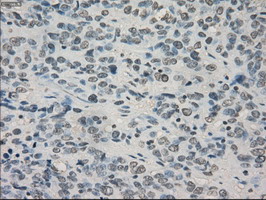
IHC of paraffin-embedded Carcinoma of bladder tissue using anti-CRYAB mouse monoclonal antibody. (Dilution 1:50).

IHC of paraffin-embedded Carcinoma of pancreas tissue using anti-CRYAB mouse monoclonal antibody. (Dilution 1:50).
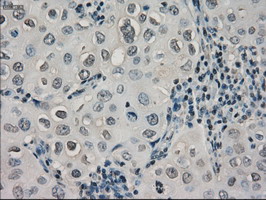
IHC of paraffin-embedded Adenocarcinoma of breast tissue using anti-CRYAB mouse monoclonal antibody. (Dilution 1:50).
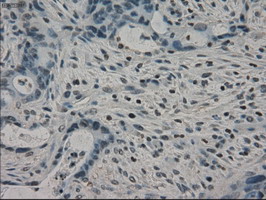
IHC of paraffin-embedded Adenocarcinoma of colon tissue using anti-CRYAB mouse monoclonal antibody. (Dilution 1:50).
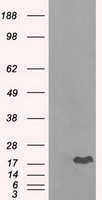
HEK293T cells were transfected with the pCMV6-ENTRY control (Left lane) or pCMV6-ENTRY CRYAB (Right lane) cDNA for 48 hrs and lysed. Equivalent amounts of cell lysates (5 ug per lane) were separated by SDS-PAGE and immunoblotted with anti-CRYAB.
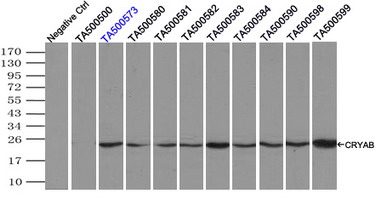
Immunoprecipitation(IP) of CRYAB by using monoclonal anti-CRYAB antibodies (Negative control: IP without adding anti-CRYAB antibody.). For each experiment, 500ul of DDK tagged CRYAB overexpression lysates (at 1:5 dilution with HEK293T lysate), 2 ug of anti-CRYAB antibody and 20ul (0.1 mg) of goat anti-mouse conjugated magnetic beads were mixed and incubated overnight. After extensive wash to remove any non-specific binding, the immuno-precipitated products were analyzed with rabbit anti-DDK polyclonal antibody.
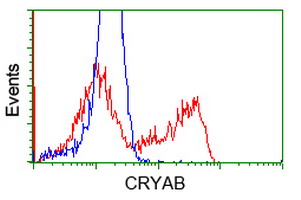
HEK293T cells transfected with either overexpress plasmid (Red) or empty vector control plasmid (Blue) were immunostained by anti-CRYAB antibody, and then analyzed by flow cytometry.








